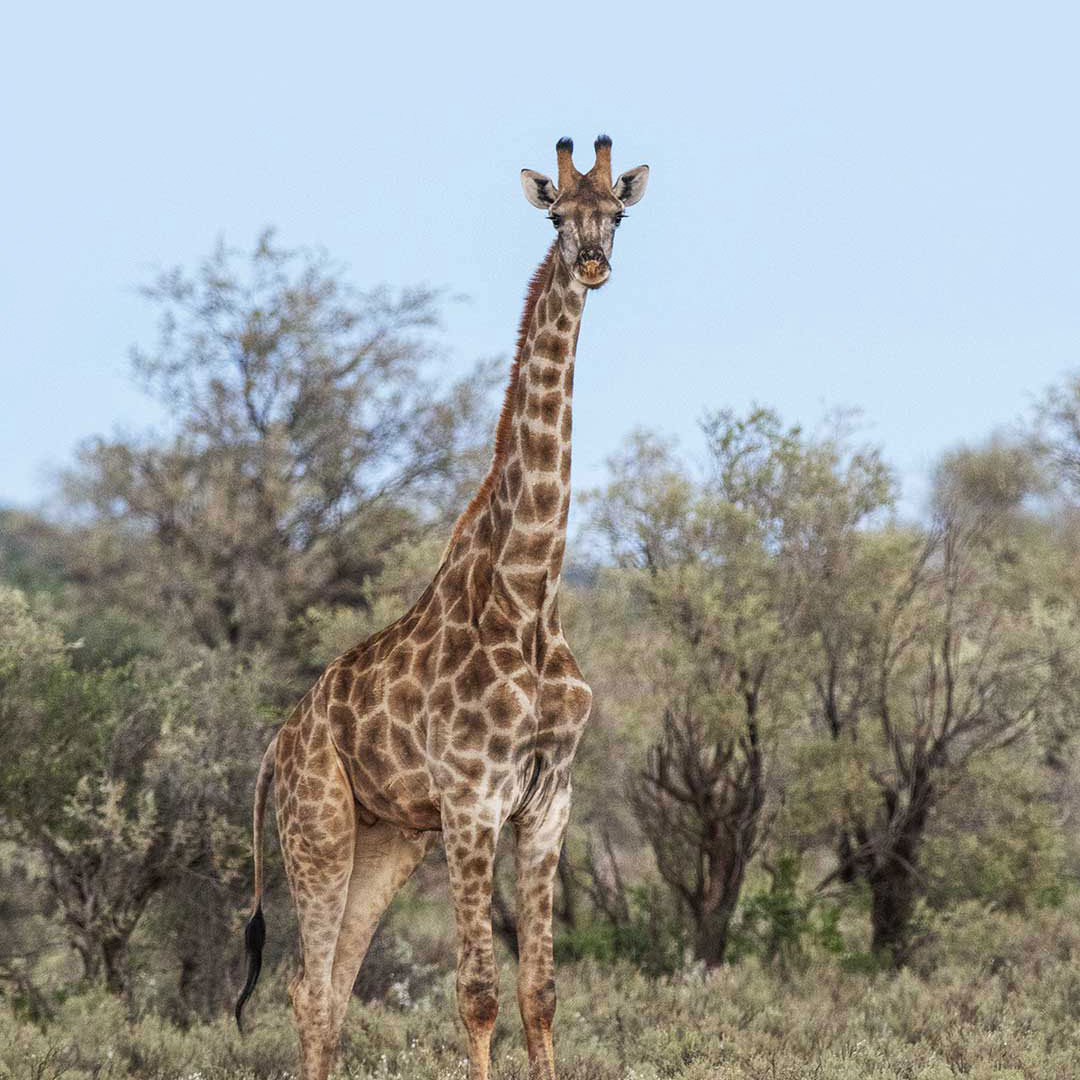The quiet disappearance of giraffes is taking Rockwood on a journey of discovery
Africa’s giraffe populations are quietly diminishing. Known as the “silent extinction”, 40% of giraffes have vanished since the 1980s. Where once the continent was teeming with these graceful giants, only 68 000 now remain. Like most other African species, habitat loss, poaching and the effects of civil unrest threaten the survival of giraffes.
Considered “easy prey”, they are especially targeted by poachers for the bushmeat trade. Trading in giraffe ‘products’ is also rife. In some countries, giraffe bone marrow and brains are considered a cure for HIV/AIDS.
Of the species with nine sub-species, six are listed on one of the threatened categories, ranging from near threatened to critically endangered. Two are not yet assessed and one is least concerned. In 2019, giraffes were protected with an Appendix II listing by the Convention on International Trade in Endangered Species of Wild Fauna and Flora (CITES). While this doesn’t ban all international trade of the species, it does impose stringent conditions to restrict buying and selling giraffe parts.
Fortunately, giraffe numbers are increasing in Southern Africa due to conservation efforts, including the number of private reserves that protect them.
At Rockwood, we protect a small population of giraffes on our reserve. As well as safeguarding our small “journey”, we also use the group to conduct valuable conservation research. Historically overlooked in terms of research and conservation, we are part of a new conservation movement to save giraffes against extinction.

ROCKWOOD GIRAFFE RESEARCH
Our giraffe research involves the non-invasive collection of hormonal data. We use the data to ascertain stress levels in giraffes to improve the process of relocating the animals. Relocating giraffes to create viable breeding herds, or to reintroduce giraffes to new areas, forms a major part of conserving and managing their populations. The data helps us improve relocation methods in lowering the animal’s stress levels during the process.
To do this, we test for faecal glucocorticoid metabolites which helps us see the level of stress hormones in the animal’s bodies. Glucocorticoids is a steroid stress hormone. A better-known steroid stress hormone is cortisol, but glucocorticoid works similarly.
To test metabolites of the hormone levels, we followed the giraffes on horseback until we see them defecating. Then we quickly collect the faeces for testing. The samples must be less than half an hour old when collected as the metabolism of the hormone continues even outside the body.
In other words, we do not measure their exact hormone levels, but instead the metabolites of the hormones. So, the higher the metabolite levels, the higher the hormones in the body. To measure exact levels, you would have to draw blood which in turn is invasive and stressful for the animal. As a result, you wouldn’t see the effect of the translocation on their stress levels, as you would instead be measuring their stress of capturing and drawing blood.
Adding to the hormone research, our conservation scientist, Ciska Scheijen, has also co-written and published papers on the viability and considerations of giraffe translocations.

GIRAFFE FACTS:
HABITAT:
Giraffes are native to Africa. But each subspecies inhabits a different area where diverse types of vegetation occur.
FEEDING:
Giraffes feed on leaves, seeds and fruits. The thorny acacia tree is one of their favourites which they have adapted to manage with their thick saliva and long tongue.
To ward off being decimated by giraffes and other antelope, the acacia tree has two defence mechanisms. When animals feed off it regularly, it makes more thorns to prevent herbivores from feeding on too many leaves. In other words, the more browsers feed on the tree, the more thorns the tree will make. The second defence mechanism is tannin, a toxic chemical the trees produce when antelope feed on them. As soon as the animals have eaten “enough” leaves, the tree produces tannin, and the leaves get bitter. This causes the animals to move on. But more impressively, the trees communicate with each other. The tannin is transported by the wind to other trees, warning its neighbour to start producing tannin. But giraffes have discovered that if they move upwind, the next tree has not been warned yet and its leaves are still palatable.

REPRODUCTION:
Giraffe reproduction starts with males struggling to earn the right to mate with females when they are in oestrus. Young bulls play-fight, by hitting their heads and necks together. But when they are mature, the fights become more violent as they struggle for dominance. These fights can become quite aggressive with the potential to kill each other. Usually, it is the older, and biggest bulls that are on top of the hierarchy.
The dominant males have access to the available females of the herd. After mating and a gestation period of around 15 months, a six-foot-tall calf is born.
COMMUNICATION:
Giraffes do not have a distinctive sound. Instead they use snorts and grunts. Researchers are still studying the intricacies of giraffe communication.
SOCIAL STRUCTURE:
Giraffes have a social structure that is known as a fission fusion dynamic which is affected by age, sex, home range overlap and kinship. Bulls are often solitary, roaming between female herds in search of mates. Some herds can consist of just adult females and calves, with one female looking after all the young in a group while the others are looking for feed.
To raise awareness for the tallest mammal on Earth, we invite you to join us in celebrating World Giraffe Day on June 21st.
At Rockwood, we’re doing whatever we can to safeguard vulnerable species for future generations. But we can’t do it alone. We need your help.

